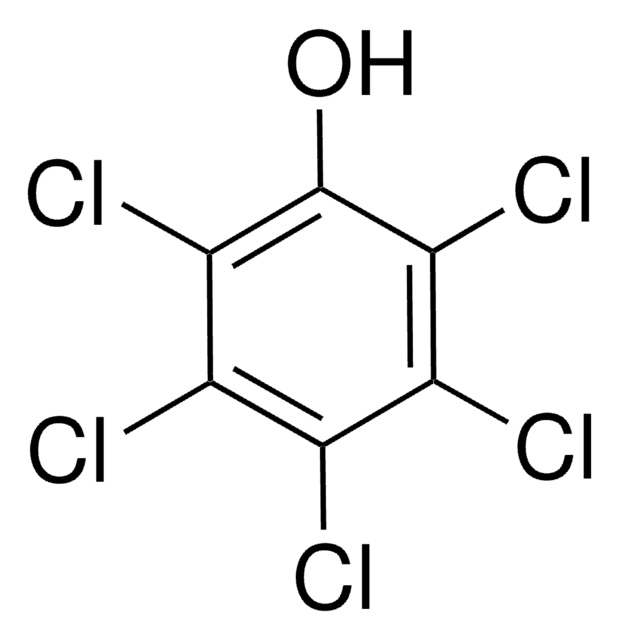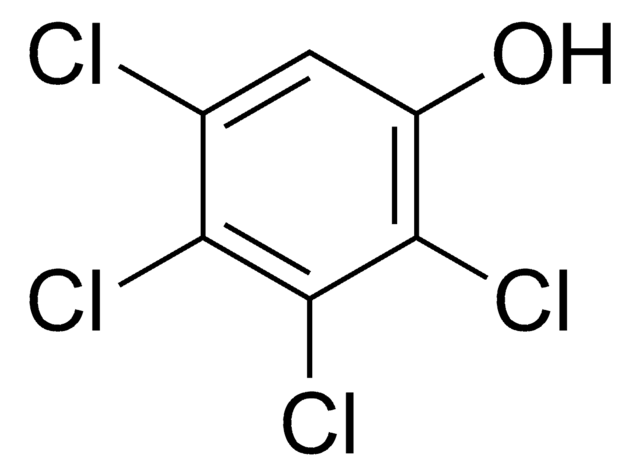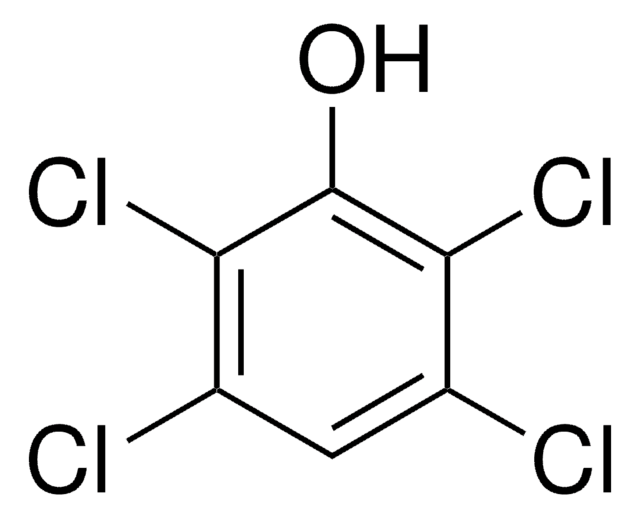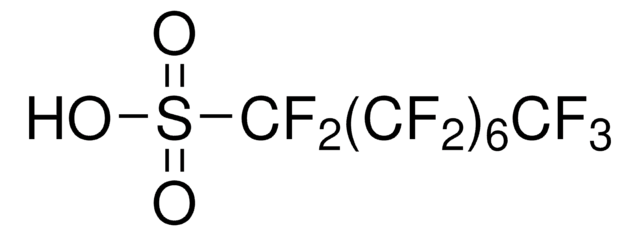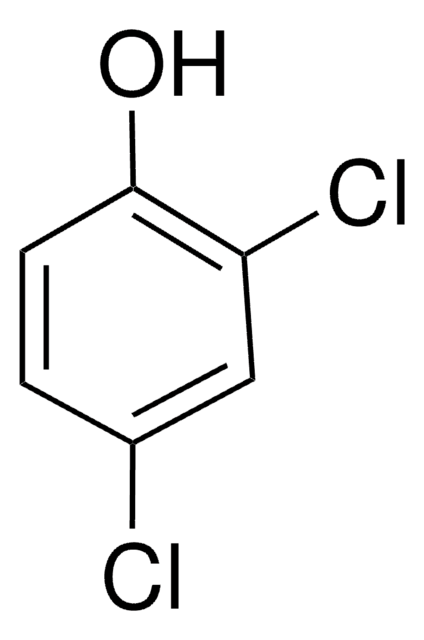P2604
Pentachlorophenol
97%
Synonyme(s) :
1-Hydroxy-2,3,4,5,6-pentachlorobenzene, 1-Hydroxypentachlorobenzene, 2,3,4,5,6-Pentachlorophenol
About This Item
Produits recommandés
Densité de vapeur
9.2 (vs air)
Niveau de qualité
Pression de vapeur
40 mmHg ( 211.2 °C)
Essai
97%
Forme
powder or chunks
pb
310 °C (lit.)
Pf
165-180 °C (lit.)
Densité
1.978 g/mL at 25 °C (lit.)
Chaîne SMILES
Oc1c(Cl)c(Cl)c(Cl)c(Cl)c1Cl
InChI
1S/C6HCl5O/c7-1-2(8)4(10)6(12)5(11)3(1)9/h12H
Clé InChI
IZUPBVBPLAPZRR-UHFFFAOYSA-N
Vous recherchez des produits similaires ? Visite Guide de comparaison des produits
Catégories apparentées
Mention d'avertissement
Danger
Mentions de danger
Classification des risques
Acute Tox. 2 Inhalation - Acute Tox. 3 Dermal - Acute Tox. 3 Oral - Aquatic Acute 1 - Aquatic Chronic 1 - Carc. 2 - Eye Irrit. 2 - Skin Irrit. 2 - STOT SE 3
Organes cibles
Respiratory system
Code de la classe de stockage
6.1A - Combustible acute toxic Cat. 1 and 2 / very toxic hazardous materials
Classe de danger pour l'eau (WGK)
WGK 3
Faites votre choix parmi les versions les plus récentes :
Déjà en possession de ce produit ?
Retrouvez la documentation relative aux produits que vous avez récemment achetés dans la Bibliothèque de documents.
Les clients ont également consulté
Notre équipe de scientifiques dispose d'une expérience dans tous les secteurs de la recherche, notamment en sciences de la vie, science des matériaux, synthèse chimique, chromatographie, analyse et dans de nombreux autres domaines..
Contacter notre Service technique